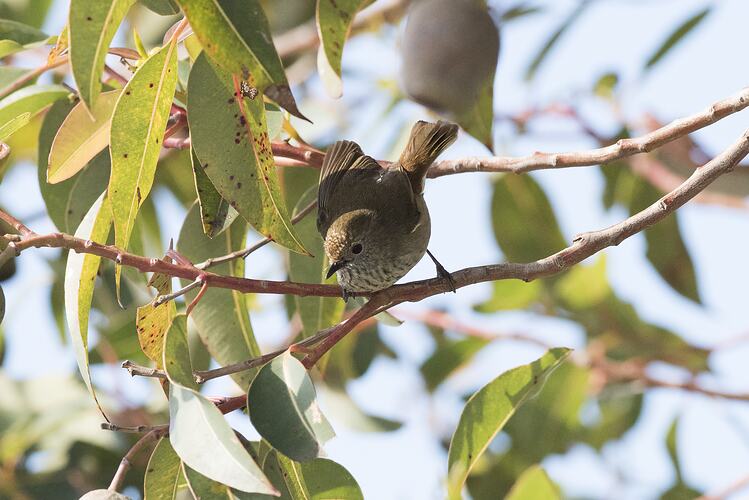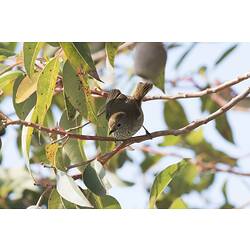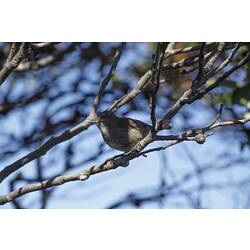General Description
Upperparts olive-brown, underparts buff white to grey. Chest, throat and chin streaked black. Rump reddish-brown rump transitioning into a grey-brown tail with pale tip. Forehead reddish-brown with buff scallops. Eye large and red. Bill to tail length up to 10 cm.
Biology
Brown Thornbills feed mainly on insects, but also eat fruit, seeds and nectar. They feed amongst understorey vegetation and in low trees, generally in pairs. Outside of the breeding season, they feed in flocks with other thornbill species. Brown Thornbills form pair-bonds for life and will defend their territories all year. Females build a domed nest in low understorey vegetation. The nest is built of grasses, bark and spider webs, has a partly hooded opening and is lined with soft materials, such as fur and feathers. The usual clutch size is three eggs. Parents will drive fledglings from their territory in early autumn. To help deter nest predators, Brown Thornbills can mimic the alarm calls that other species make when they are warning of incoming raptors.
Distribution
Eastern and south-eastern mainland Australia and Tasmania.
Habitat
Forests, rainforests, woodlands, heathlands, shrublands and urban areas.
More Information
-
Animal Type
-
Animal SubType
-
Brief Id
A medium-sized olive brown thornbill with black streaks on the throat and chest.
-
Colours
Brown
-
Maximum Size
10 cm
-
Habitats
-
Diet
Omnivore
-
Diet Categories
Insects, Fruit, Nectar
-
Endemicity
-
Commercial
No
-
Taxon Name
-
Common Name
Brown Thornbill
-
Kingdom
-
Phylum
-
Subphylum
-
Class
-
Order
-
Family
-
Genus
-
Species Name
pusilla


